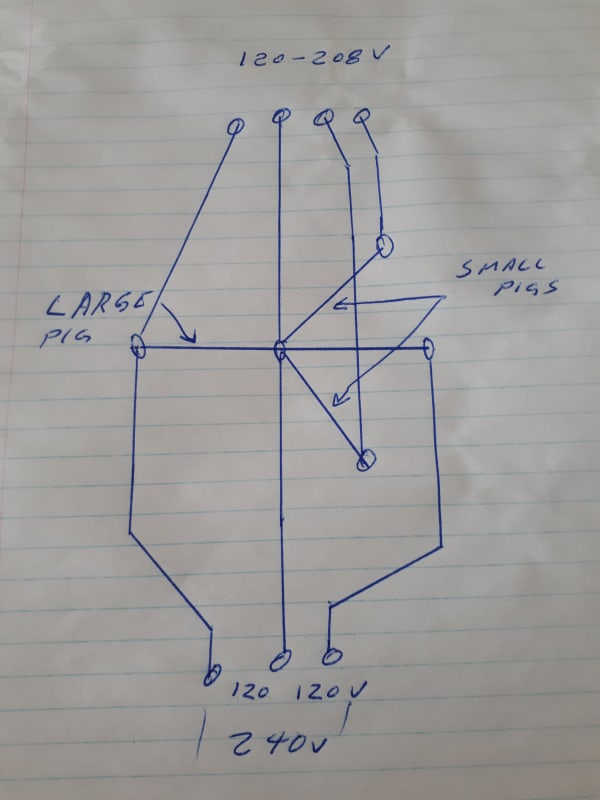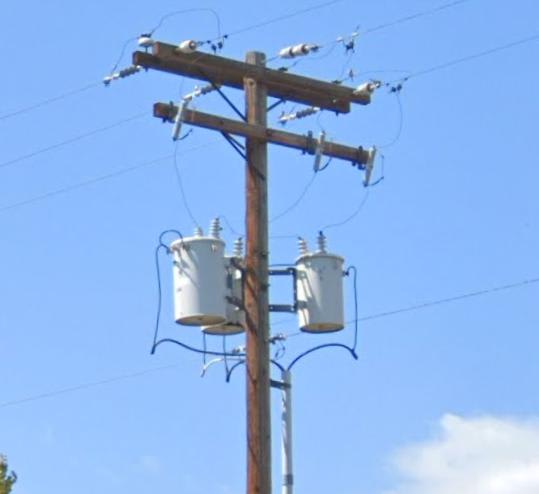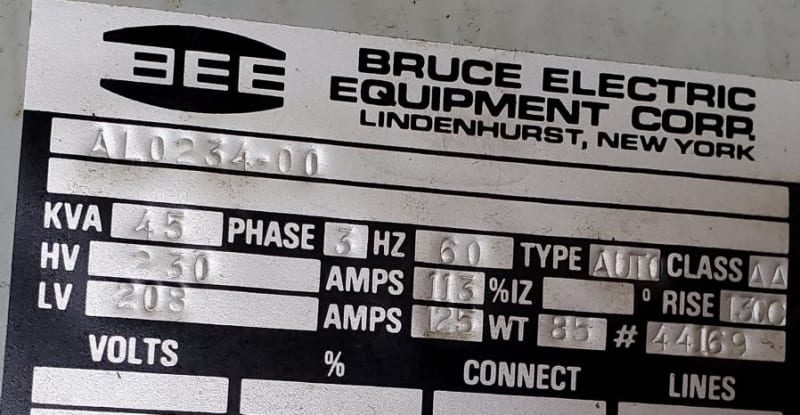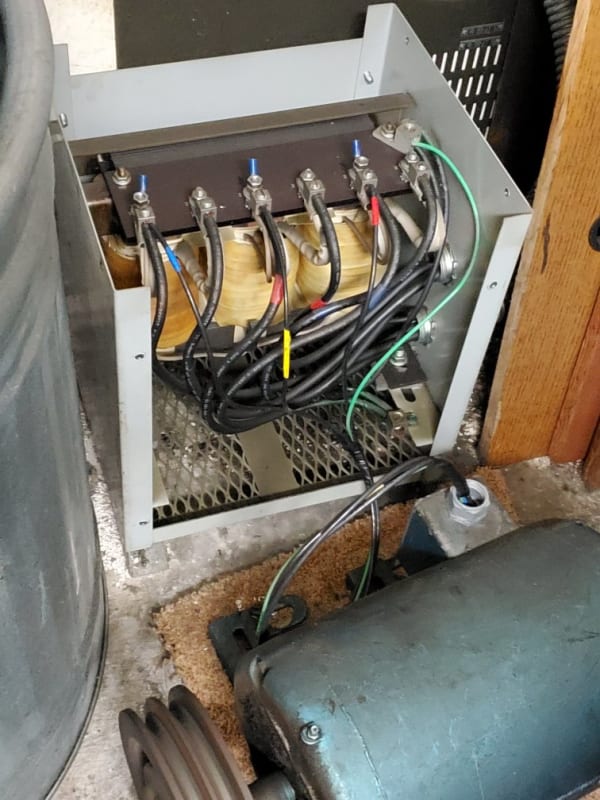Hi! I have a customer with a mid-size machine shop with lots of different types of machine tools. About 2 years ago I was introduced to the place because a large CNC tool sporadically threw error codes occasionally when a tool-changer was operated. Turned out that a control transformer was tapped at a percentage point that on hot days (low PG&E voltage) was below a functional output. I up-tapped 3(!) taps to get the voltage centered on requirements and all has been well.
Until recently...
That same unit had it's $4k spindle drive motor toast.
Now there's a lathe that throws bizarre error codes out of a controller that stops the machine in its tracks. The guy finds another sub-unit on ebay, buys and installs it. It throws the same exact code! He calls the seller and the seller tells him the only time he ever sees that strange code is when the units are installed into anOPEN-WYE OPEN-DELTA (please read what I mean not what I type) system that has issues. He went on to say he saw it at a place where it threw codes only on weekends because the neighboring business were not running. He suggested turning on every induction motor he has to see what happens. Doing this made a difference!
The customer also stated that a machine with a 7-1/2hp motor is fed by a conduit that runs thru his office. In the last year he's realized he can hear that conduit buzzing a little when the motor is running and it has slowly gotten louder and louder.
Most machines have buck transformers to get the ODelta 240Vac down to 208V (Japanese machinery).
Yesterday PG&E showed up and installed a power monitor ahead of his meter and have since told him, "There's something strange happening.".
We're awaiting their written report (later today??).
Any suggestions popping into your heads?
Antidotes?
Things to check?
Changes to make?
Watch-outs?
Keith Cress
kcress -
Until recently...
That same unit had it's $4k spindle drive motor toast.
Now there's a lathe that throws bizarre error codes out of a controller that stops the machine in its tracks. The guy finds another sub-unit on ebay, buys and installs it. It throws the same exact code! He calls the seller and the seller tells him the only time he ever sees that strange code is when the units are installed into an
The customer also stated that a machine with a 7-1/2hp motor is fed by a conduit that runs thru his office. In the last year he's realized he can hear that conduit buzzing a little when the motor is running and it has slowly gotten louder and louder.
Most machines have buck transformers to get the ODelta 240Vac down to 208V (Japanese machinery).
Yesterday PG&E showed up and installed a power monitor ahead of his meter and have since told him, "There's something strange happening.".
We're awaiting their written report (later today??).
Any suggestions popping into your heads?
Antidotes?
Things to check?
Changes to make?
Watch-outs?
Keith Cress
kcress -


![[cry] [cry] [cry]](/data/assets/smilies/cry.gif)





